In September 1972, only three months remained until Apollo 17, the final Apollo Moon landing mission, planned for launch in December 1972. Astronauts Commander Eugene A. Cernan, Command Module Pilot Ronald E. Evans, and Lunar Module Pilot Harrison H. “Jack” Schmitt, and their backups John W. Young, Stuart A. Roosa, and Charles M. Duke, continued training for various portions of their 12-day mission to the Taurus-Littrow region of the Moon. While Schmitt was the trained geologist of the crew, each astronaut continued to receive extensive geology training, including a field trip to Tonopah, Nevada. They rehearsed spacewalk activities on simulated lunar terrain, in a water tank to simulate weightlessness, and aboard an aircraft to simulate the low lunar gravity.
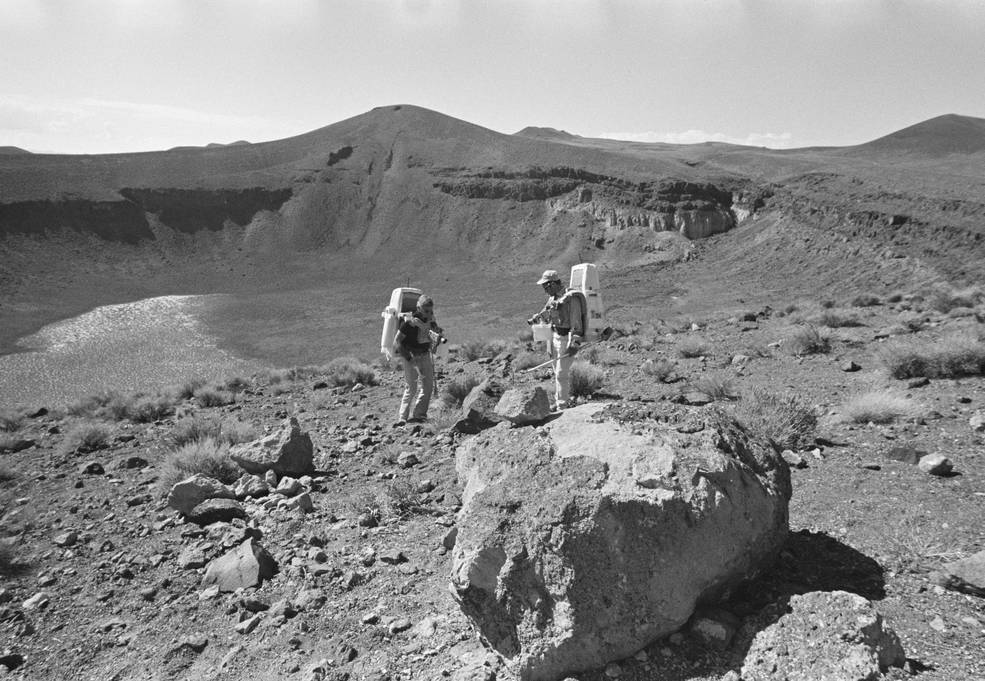
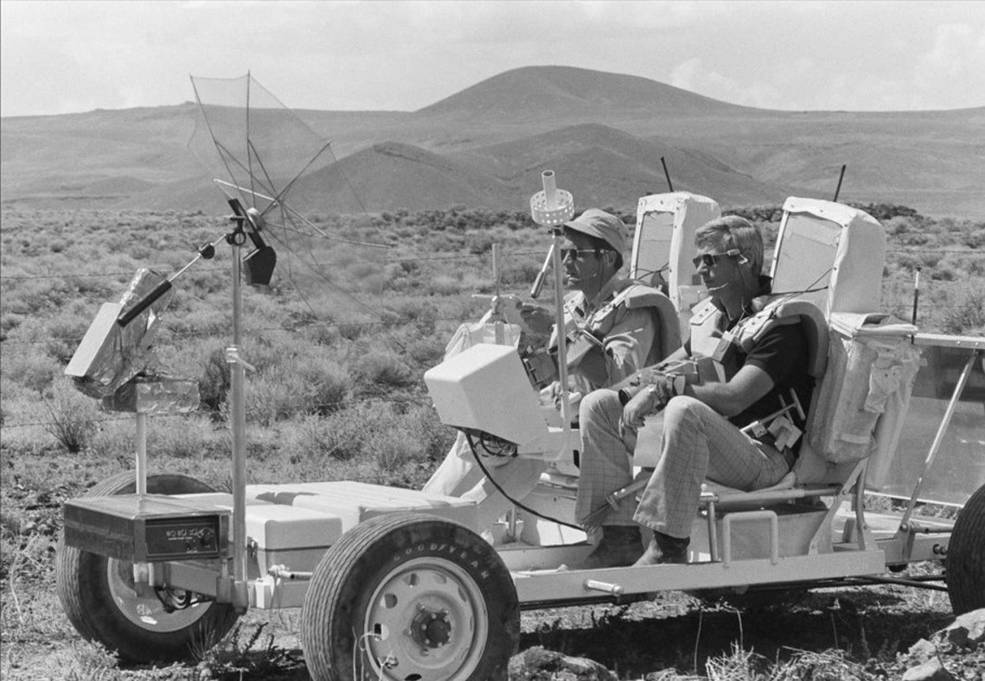
Left: Apollo 17 astronauts Eugene A. Cernan, left, and Harrison H. “Jack”
Schmitt during the geology field trip to Tonopah, Nevada. Right: Schmitt,
left, and Cernan driving the “Grover,” a ground-based training version
of the Lunar Roving Vehicle.
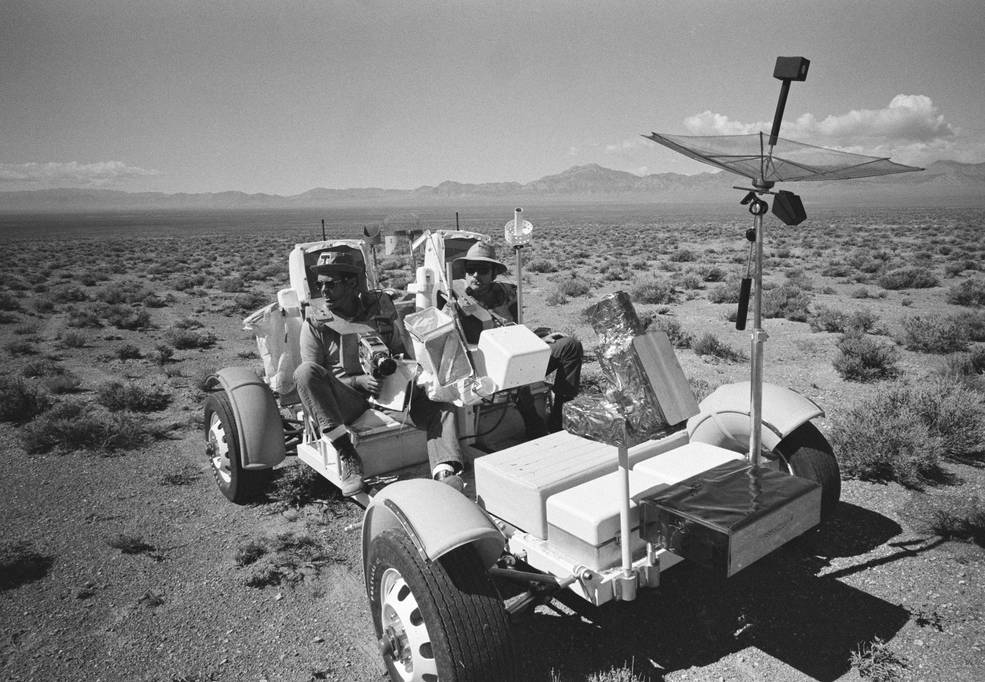
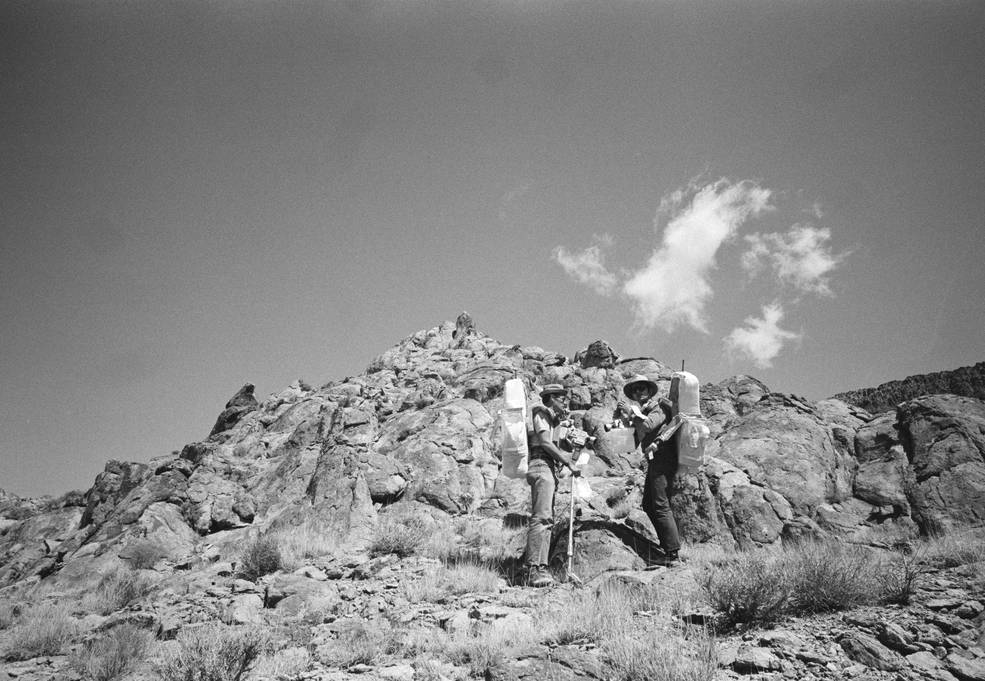
Left: Apollo 17 backup crew members Charles M. Duke, left, and John W.
Young drive the Grover ground-based training version of the Lunar Roving
Vehicle during the geology field trip to Tonopah, Nevada. Right: Duke,
left, and Young examine rocks samples during the Tonopah,
Nevada, geology trip.
Apollo 17, the last human Moon landing of the Apollo program and for the foreseeable future, focused its attention on lunar geology, highlighted by the addition of geologist-astronaut Schmitt to the crew. In addition to receiving many hours of classroom lectures on the subject, the Apollo 17 astronauts participated in geology field trips to sites similar to the terrain expected at the Taurus-Littrow landing site on the Moon. On Sept. 6-7, Cernan, Schmitt, Young, Duke, and a team of geologists traveled to Tonopah, Nevada. Over the course of two lunar traverse simulations, the astronauts used a ground-based simulator called Grover to explore Lunar Crater, a relatively young, little-eroded volcanic feature that shared characteristics with the Apollo 17 landing site landscape. The Grover, built by the U.S. Geological Survey, is similar to the Lunar Roving Vehicle (LRV) the astronauts would use on the Moon. During the training, both prime and backup crews communicated through a capsule communicator (capcom) with scientists in a control center backroom, much as they would during the actual mission. Apollo 17 Flight Director M.P. “Pete” Frank attended the training sessions as an observer.
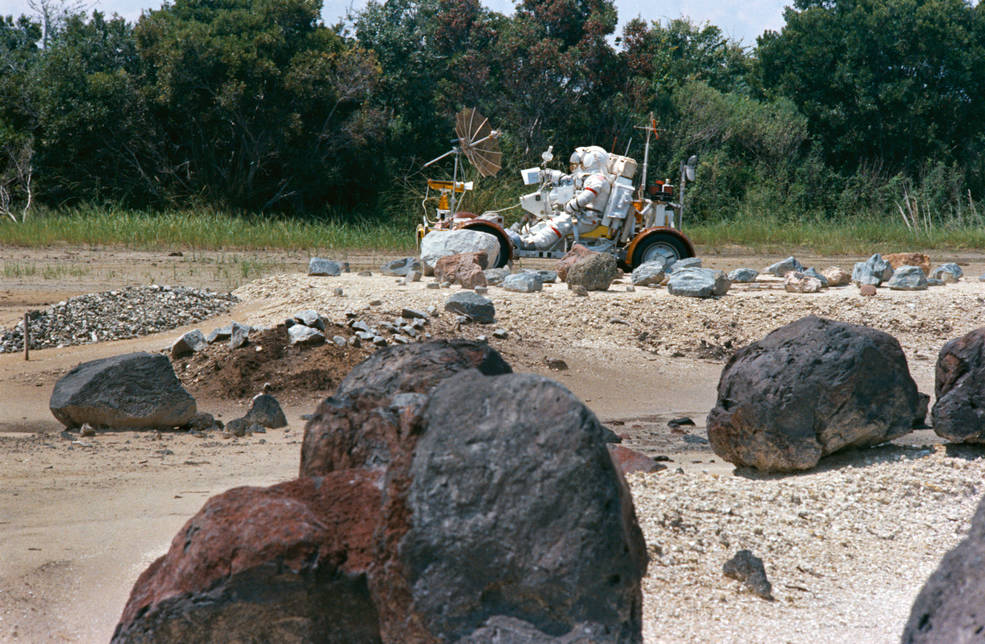
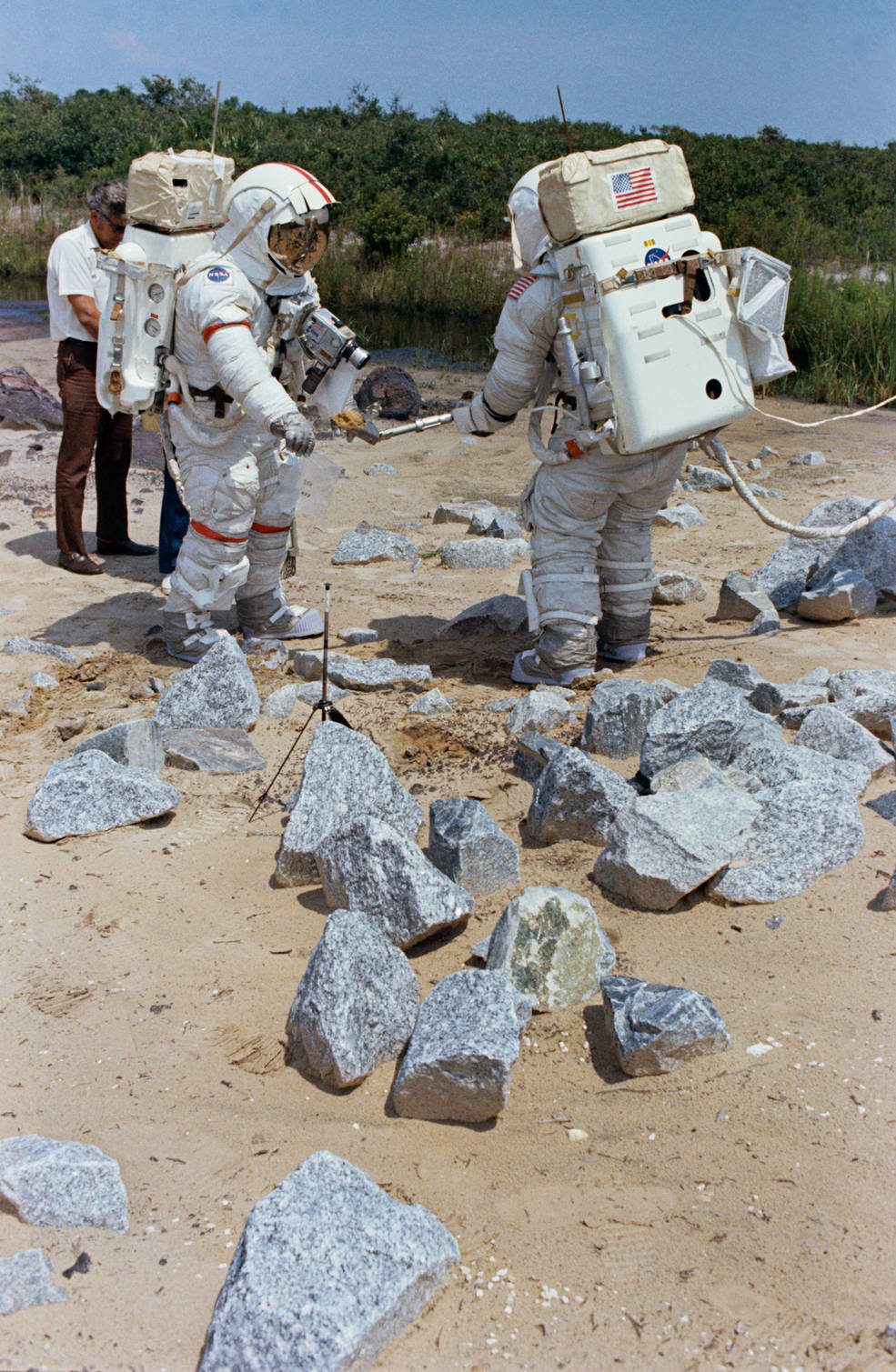
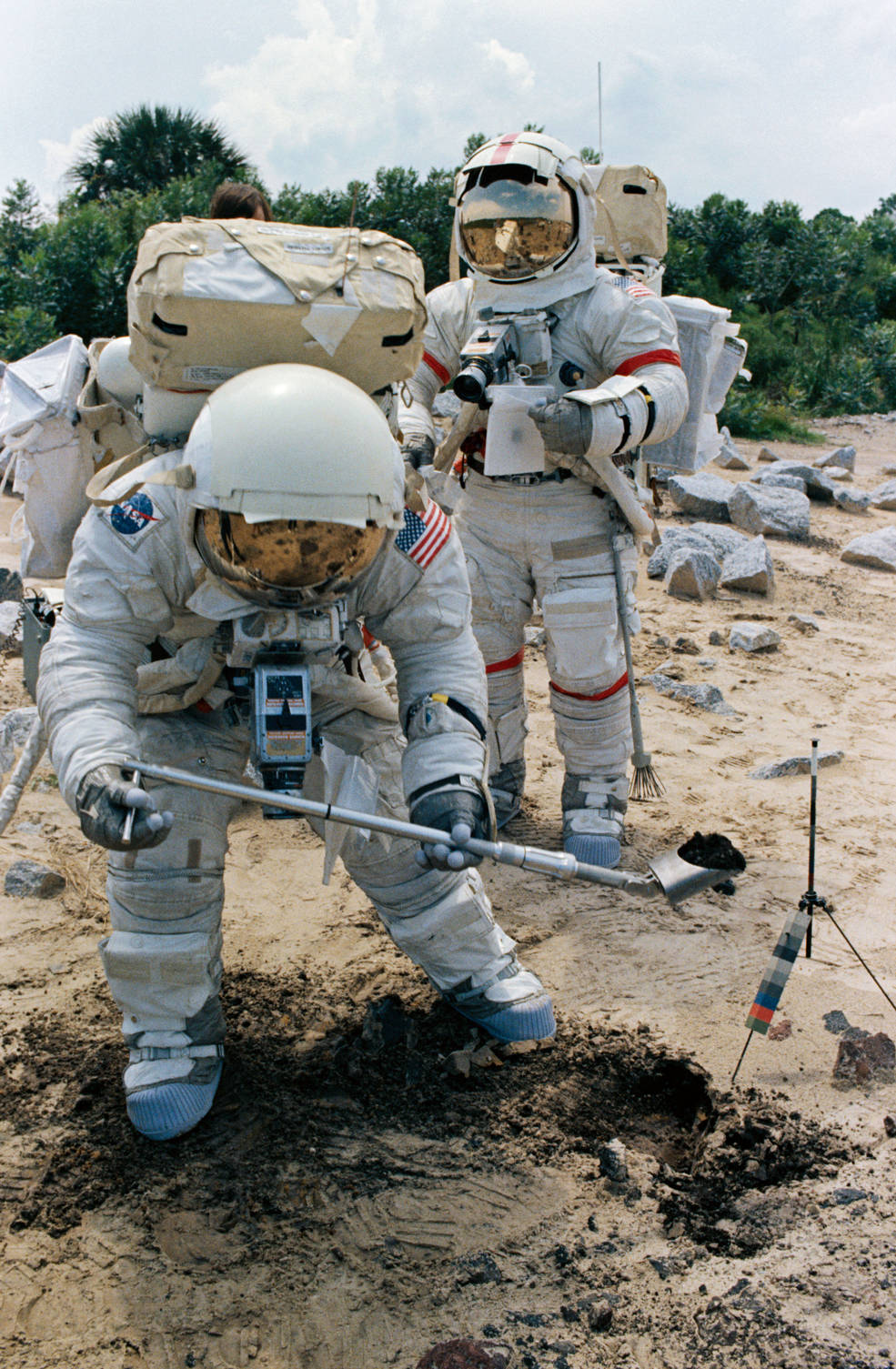
Left: At NASA’s Kennedy Space Center (KSC) in Florida, Apollo 17 astronauts Harrison
H. “Jack” Schmitt, left, and Eugene A. Cernan practice driving a training version of
the Lunar Roving Vehicle. Middle: Cernan, left, and Schmitt simulate collecting lunar
samples at the rockpile at KSC. Right: Schmitt, left, practices scooping a
sample while Cernan holds the sample bag.
At NASA’s Kennedy Space Center in Florida, Cernan, Schmitt, Young, and Duke practiced the lunar surface excursions in an area known as the rockpile, an outdoor zone sprinkled with rocks and boulders to simulate the Moon’s terrain. Wearing full pressure suits, they practiced driving a training version of the LRV and rehearsed collecting rock and soil samples and deploying the various experiments of the Apollo Lunar Surface Experiments Package.
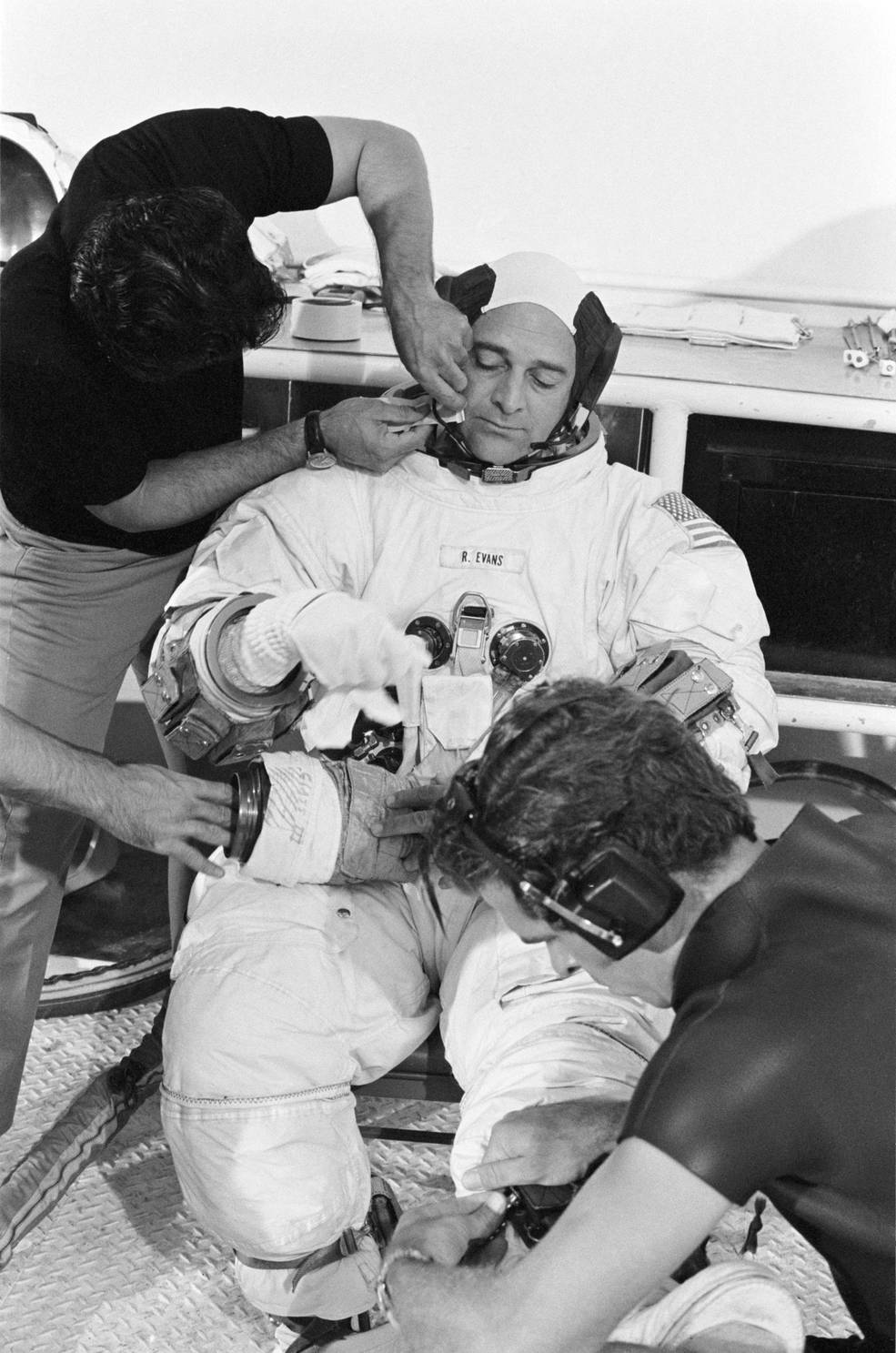
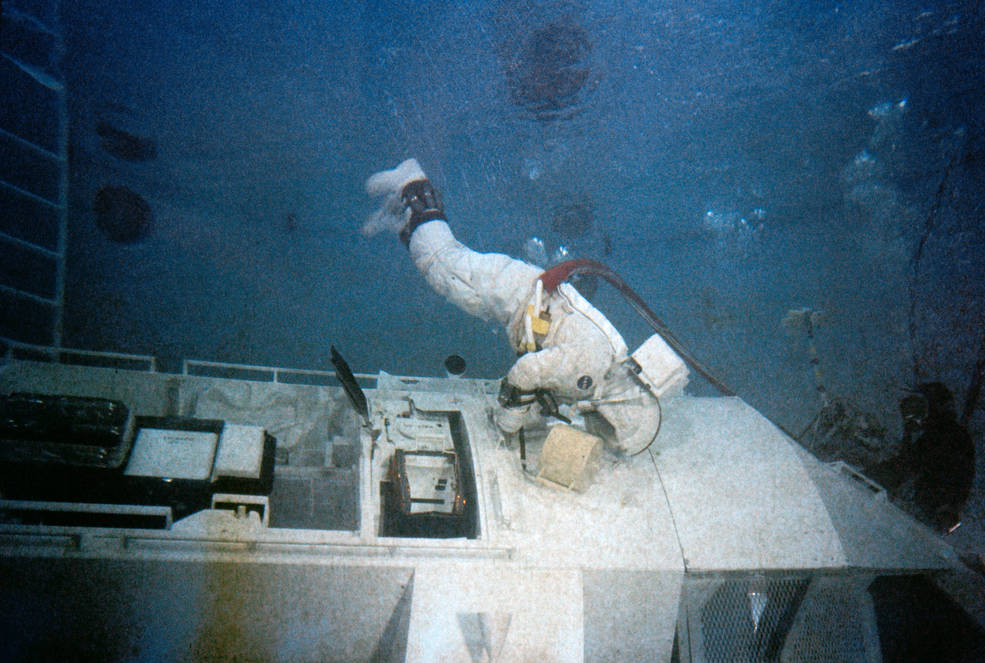
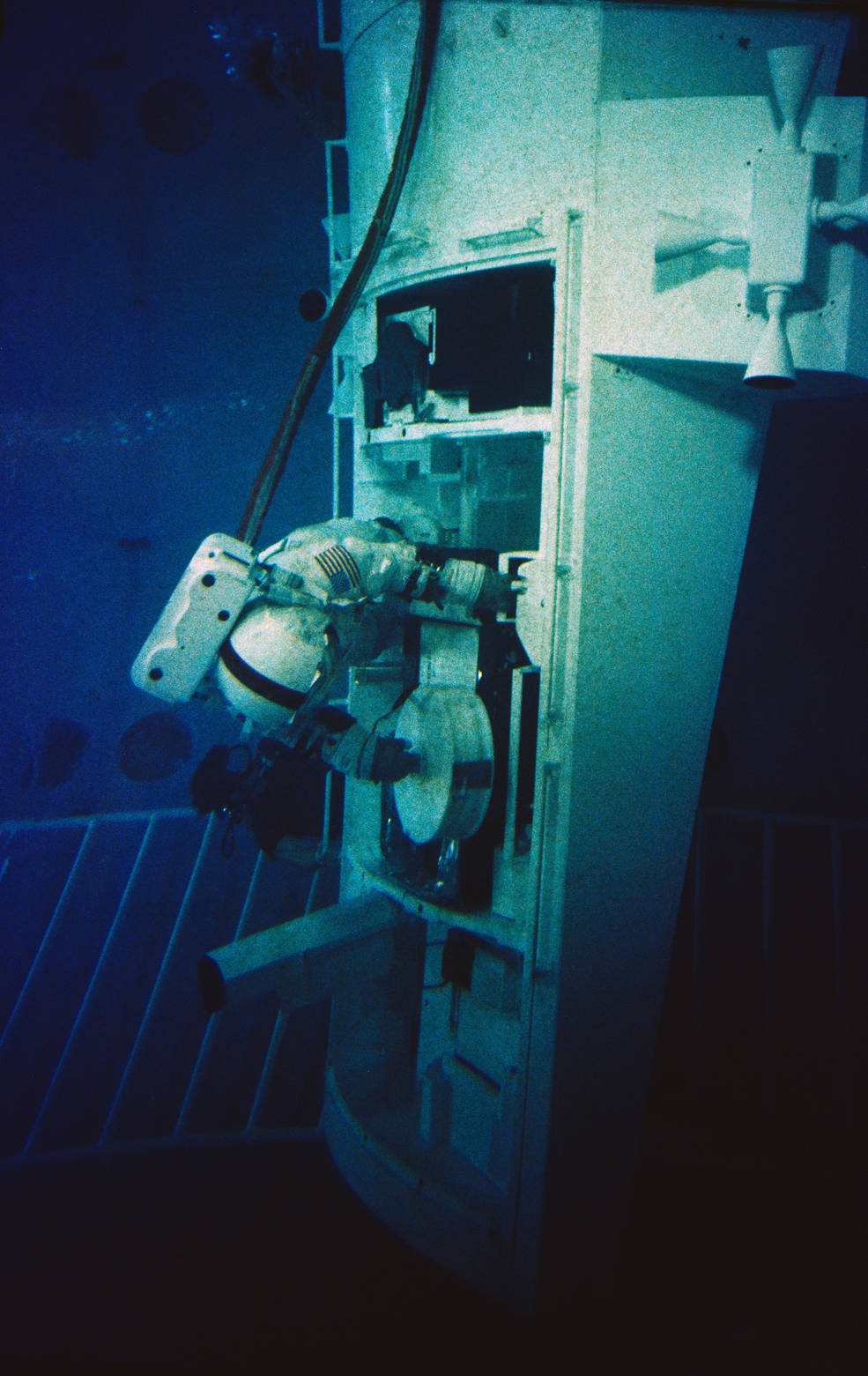
Left: Apollo 17 astronaut Ronald E. Evans prepares for a training run in the Water
Immersion Facility (WIF) at the Manned Spacecraft Center, now NASA’s Johnson Space
Center in Houston. Middle: Evans in the WIF practices tasks for the deep-space
spacewalk to retrieve film canisters from the Scientific Instrument Module.
Right: Evans in the WIF during spacewalk training.
Evans and his backup Roosa practiced the deep-space spacewalk in the Water Immersion Facility (WIF) at the Manned Spacecraft Center, now NASA’s Johnson Space Center in Houston. Engineers had placed a mockup of the Scientific Instrument Module (SIM) bay into the WIF so the astronauts could practice retrieving film canisters from SIM-bay cameras. The deep-space spacewalk would be performed during the return trip about 200,000 miles from Earth.
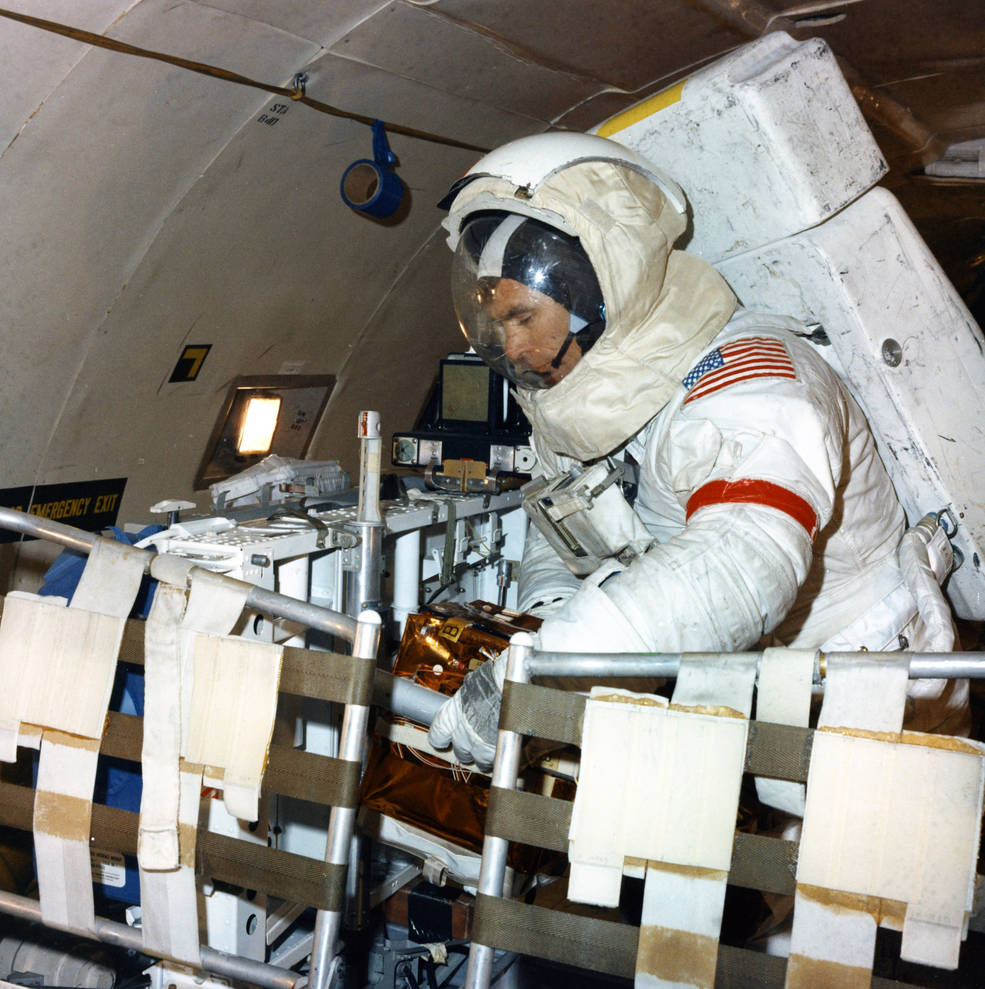
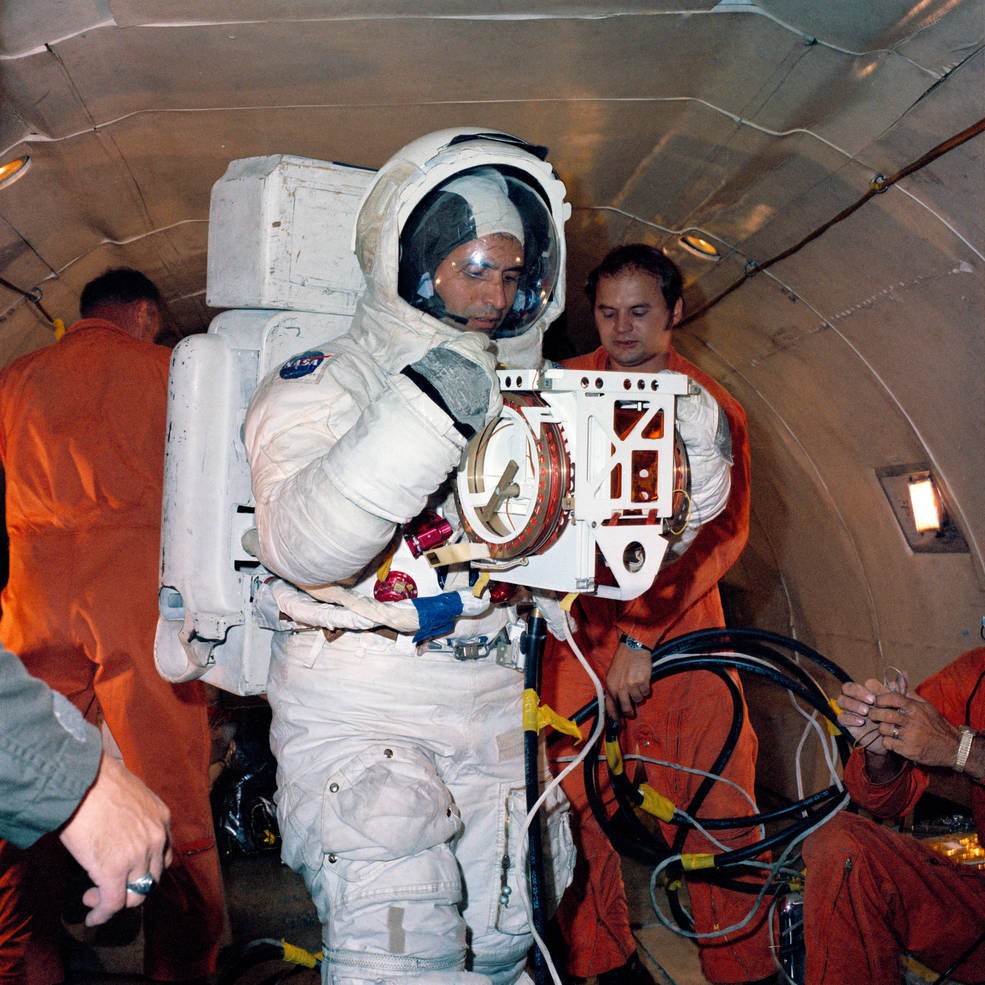
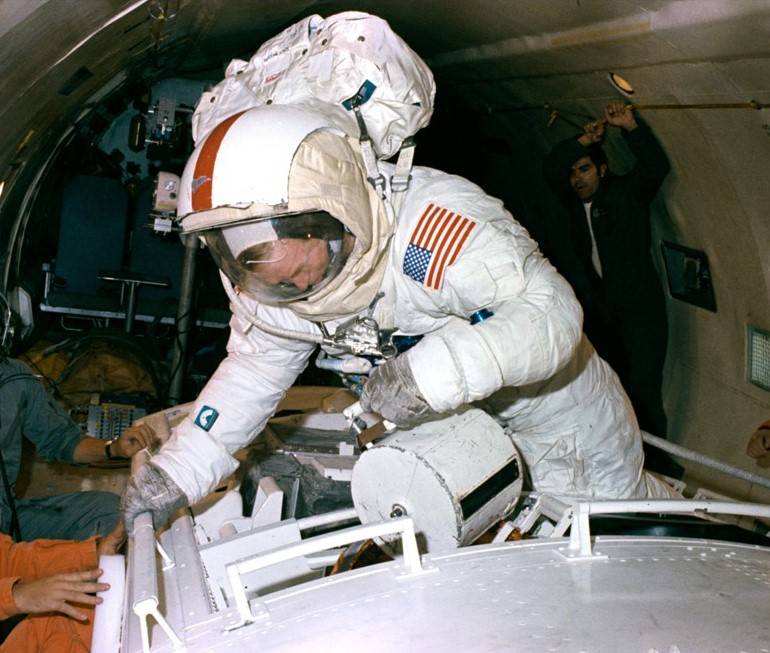
Left: Apollo 17 astronaut Eugene A. Cernan during KC-135 zero-g aircraft training.
Middle: Apollo 17 astronaut Harrison H. “Jack” Schmitt during KC-135 training.
Right: Apollo 17 backup crew member Stuart A. Roosa during KC-135 spacewalk training.
The astronauts practiced aspects of their spacewalks aboard the KC-135, an aircraft used to simulate short periods of either zero-g or one-sixth-g during parabolic trajectories. Between Sept. 19-21, Cernan, Schmitt, Young, and Duke practiced getting in and out of the LRV and moving lunar sample boxes, science experiments, and other equipment, while Evans and Roosa practiced the tasks for the deep-space spacewalk, retrieving film canisters from the Service Module’s SIM-bay experiments.
To be continued…
World events in September 1972:
September 1 – Bobby Fischer beats defending champion Boris Spassky of the Soviet Union in Reykjavik, Iceland, to become the first American to win the World Chess Championship.
September 4 – “The Price is Right,” the longest running U.S. game show, debuts on CBS.
September 4 – American swimmer Mark Spitz becomes the first athlete to win seven gold medals at a single Olympic games.
September 9 – The Soviet Union beats the United States 51-50 at the Munich Olympics in the most controversial game in international basketball history.
September 17 – Television series “M*A*S*H” debuts on CBS.
September 26 – President Richard M. Nixon signs into law the bill creating the Special Supplemental Nutrition Program for Women, Infants, and Children, more commonly known as the WIC Program.

























